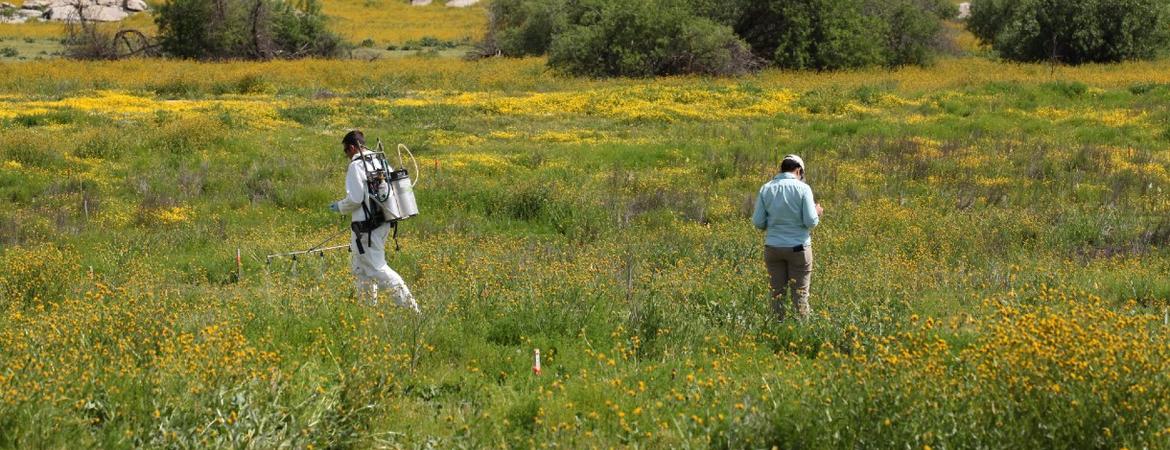
Riverside recently hosted the California Invasive Plant Council symposium for the first time in the history of the decades-old gathering.
“Having the symposium here underscores UC Riverside’s long-standing and growing importance to the field of land management and invasive plant species research,” said event committee member Lynn Sweet, a plant ecologist at UCR’s Palm Desert Center.
Sweet presented on Sahara mustard, an invasive plant that has “exploded in the last 50 years in the Coachella Valley, competing with native species and crowding out some of the popular wildflower displays,” Sweet said.
Several hundred people traveled from across the state to attend the Oct. 15-18 event at the Riverside Convention Center. The crowd was a mix of professional government and nonprofit land managers, graduate students, university faculty members, and others who came to share strategies for protecting plants, animals, and open spaces under the increasing pressure of climate change.
“For me, one of the highlights was being exposed to some out-of-the-box thinking about how to tackle thorny weed management issues on really large landscapes,” said Loralee Larios, an assistant professor of botany and plant sciences at UCR.
One example of an innovative approach to fighting invasive species presented at the conference is to use a pressure washing hose to kill weeds as an alternative to herbicides. The chemicals can accumulate in the environment and cause problems for other living things, but water of course is harmless. Another innovation is using drones or satellites to identify areas most in need of weed treatment and where topography would result in the most successful treatment.
“This conference is really a fantastic opportunity for professionals and researchers to share what they know, what’s being done now, and what more could be done to protect our open spaces,” Larios said.
In her own laboratory on campus, Larios and her students are trying to understand how environmental change might encourage the growth of various invasive plant species, and how to use that information to mitigate negative impacts.
The Larios lab is paying special attention to a nonnative invasive plant called Stinknet, a very fragrant form of chamomile spreading across western Riverside County and other parts of California.
“It’s invading habitats that traditionally house several endangered animal species that need more open bare ground,” Larios said. “Stinknet creates a dense mat that makes it hard for animals like the Stevens kangaroo rat or the cactus wren to move around and feed on the native plants they prefer.”
One of the symposium’s activities included a field trip to UCR’s Motte Rimrock Reserve in Perris Valley to observe the Stinknet invasion and highlight research to control it, like the work coming out of Larios’ lab.

The weeklong event featured several UCR speakers, including entomologist Mark Hoddle, director of UCR’s Center for Invasive Species Research; and Norm Ellstrand, a distinguished professor in the Department of Botany and Plant Sciences, who has a long history of studying invasive plant species.
Readers wondering how they can help control the spread of invasive plants and pests in California can head to the Cal-IPC website, which includes resources for residents. These include suggestions for plants to avoid in landscaping, beneficial alternatives, and places where people of all ages can volunteer for land management projects.